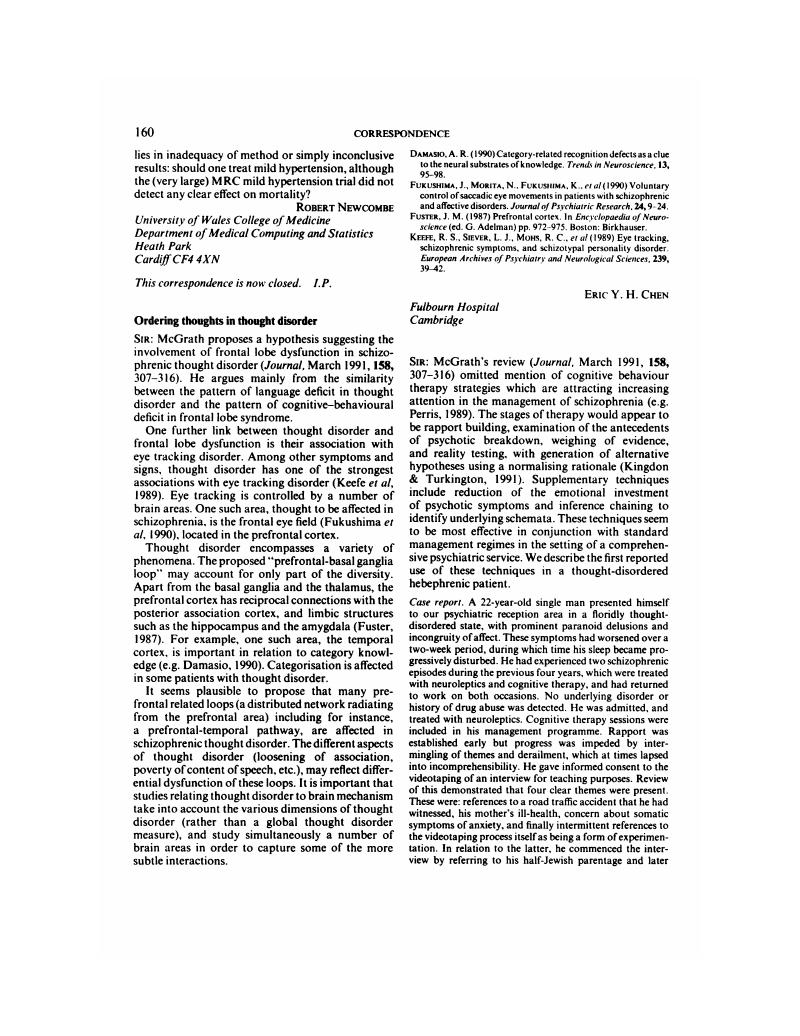Crossref Citations
This article has been cited by the following publications. This list is generated based on data provided by Crossref.
McGovern, John
and
Turkington, Douglas
2001.
‘Seeing the wood from the trees’: a continuum model of psychopathology advocating cognitive behaviour therapy for schizophrenia.
Clinical Psychology & Psychotherapy,
Vol. 8,
Issue. 3,
p.
149.
2002.
The Case Study Guide to Cognitive Behaviour Therapy of Psychosis.
p.
221.






eLetters
No eLetters have been published for this article.